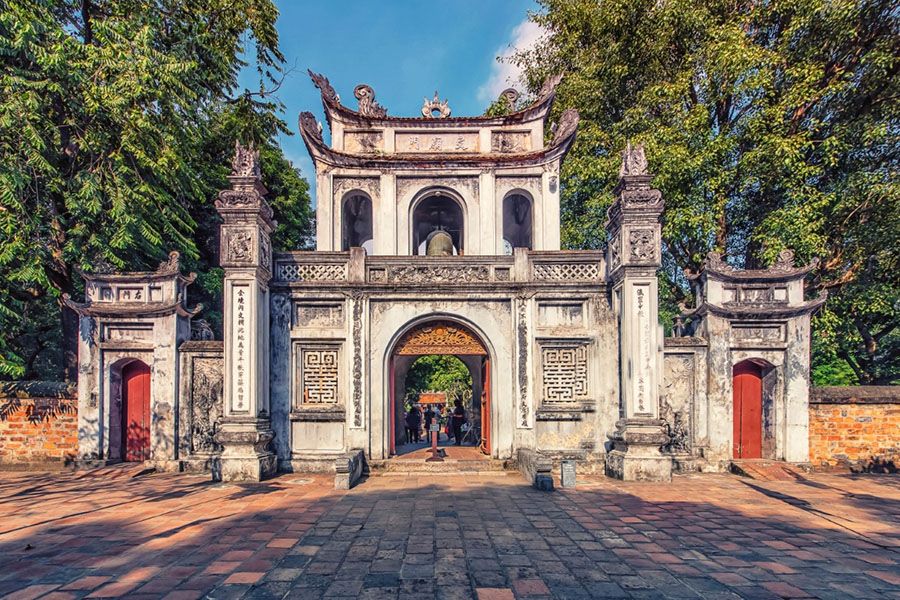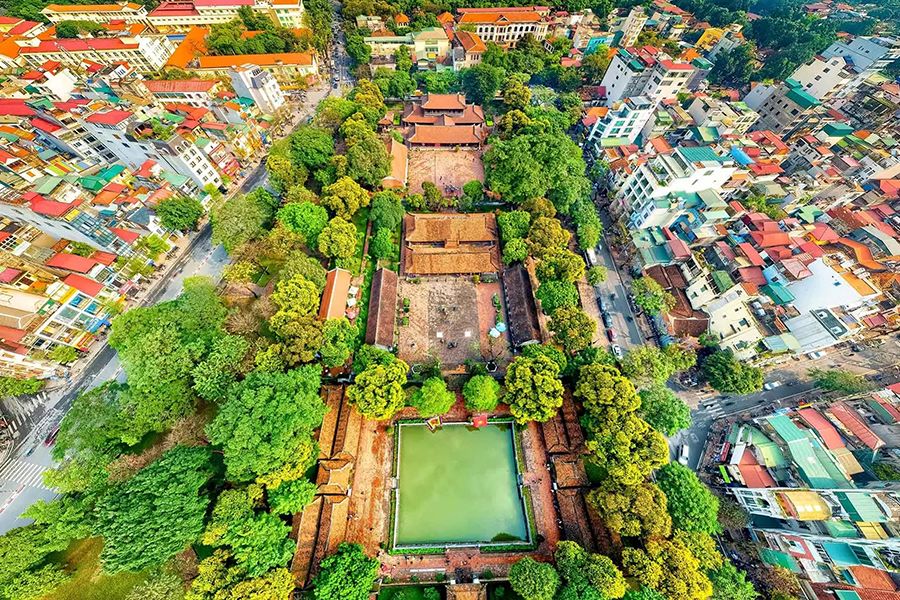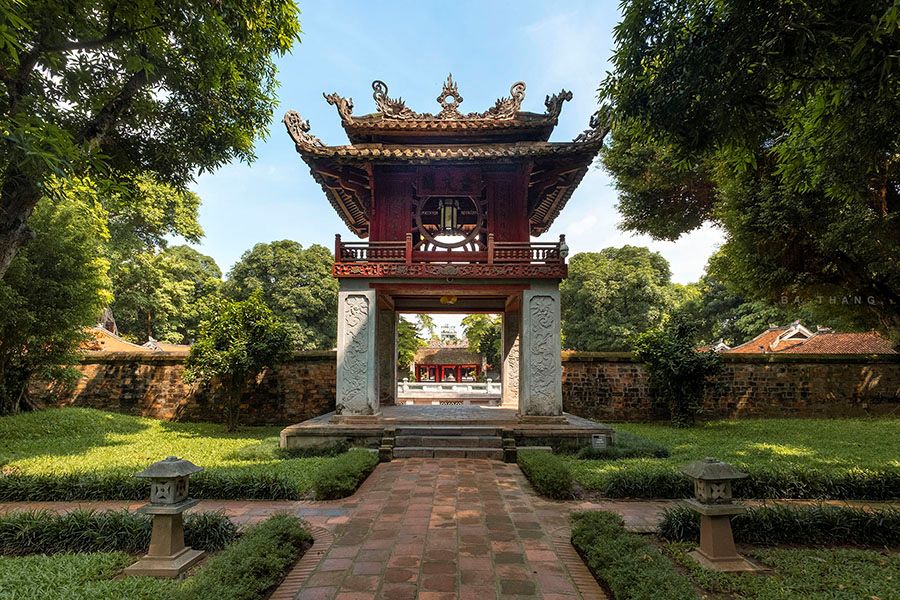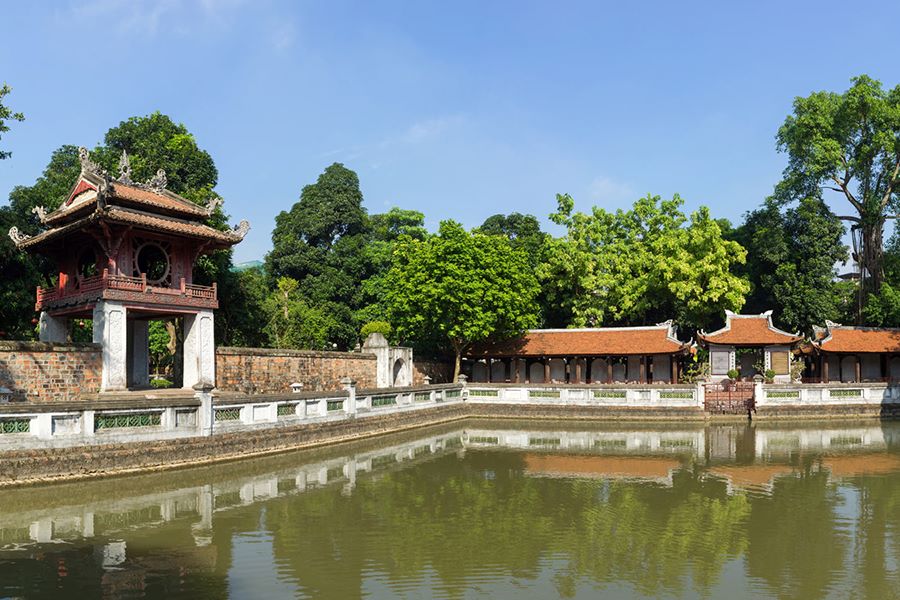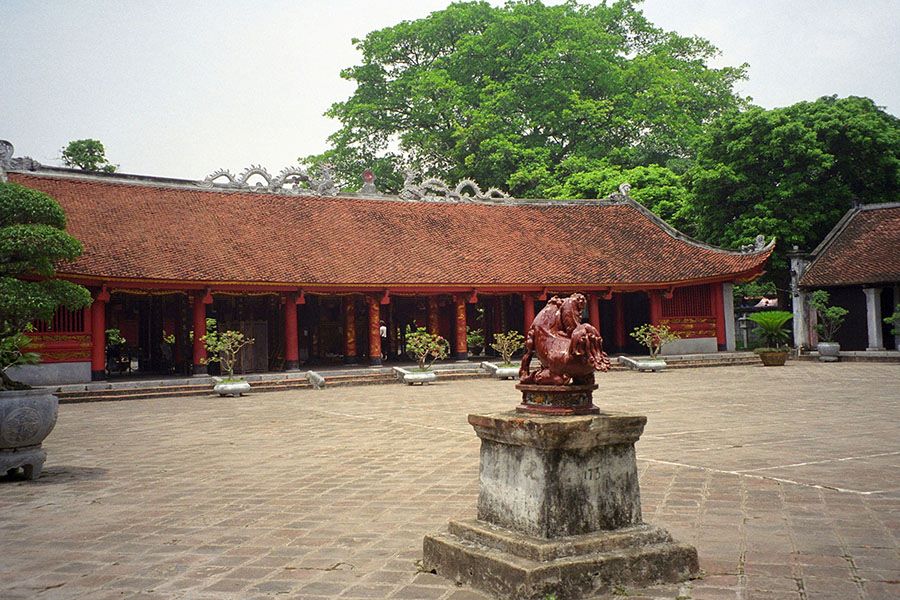The Temple of Literature is the first university complex in Vietnam. Not only is it a cultural and historical relic, but it is also where many students come to pray for luck in their upcoming exams and studies. As the first university in Vietnam, the Temple of Literature is a popular cultural and historical relic in every Hanoi travel tour. Visiting this place, you will be enchanted by its grandeur and serenity. Here, Viet Dan Travel will give you a deeper understanding of Vietnam’s history of development from the early days.
An Overview of the Temple of Literature in Vietnam
The Temple of Literature was founded in 1070 by Emperor Ly Thanh Tong to worship the Chinese philosopher Confucius. It then became the first university in Vietnam, also known as the Imperial Academy. Until the colonial period, it had been open for over 700 years and taught hundreds of renowned scholars and mandarins. Despite the ravages of war, the temple still retains its architectural and cultural beauty.
How many courtyards does the Temple of Literature have?
The Great Middle Gate
Entering the first courtyard through the Great Middle Gate, you can immediately immerse yourself in a fresh and green atmosphere.
On the top of the gate is a fish figure. According to legend, there was an annual contest for fish hosted by the gods, and those that can leap over the strongest sea waves and land on the other side of the wave will become a mighty dragons. The fish actually symbolize students. To be able to pass all of the exams, one must diligently study and never stop trying.
The Pavilion of Constellation
Despite its modest size, the Pavilion of Constellation has harmonious and beautiful proportions. This architectural work consists of 4 brick pillars supporting the upper wooden structure. The main structure has 4 round doors, handrails, and a roof. The pavilion is also a symbol of Hanoi, its picture printed on the 100,000 VND banknote of Vietnam.
The Well of Heavenly Clarity
The Well of Heavenly Clarity is actually a courtyard consisting of a square pond. In a corner, there are many stone turtles carrying enormous stelae. These stelae praise Confucianism and the past kings, describe the philosophy of each dynasty and give information about examinations and scholars.
The Gate to Great Success
A beautiful House of Ceremonies and a sanctuary dedicated to Confucius are located in the fourth courtyard, also known as the “Gate to Great Success” in Vietnamese. The highlight of this area is crimson columns and wooden ceilings, from which old lanterns hang.
The Grounds of Imperial Academy
In the fifth courtyard, there is a giant building with two floors. The first floor has a statue of the first rector of the Imperial Academy – Chu Van An. He was a great teacher who dedicated his whole life to education. The second floor is dedicated to worshiping the three kings who contributed the most to the foundation and preservation of the academy.
It can be acknowledged that the Temple of Literature is the leading complex of historical relics in Hanoi in particular and Vietnam in general. With its important historical and cultural significance, the temple has become one of 23 special national relics of the country, and definitely a touristy spot that you should not miss out on!

